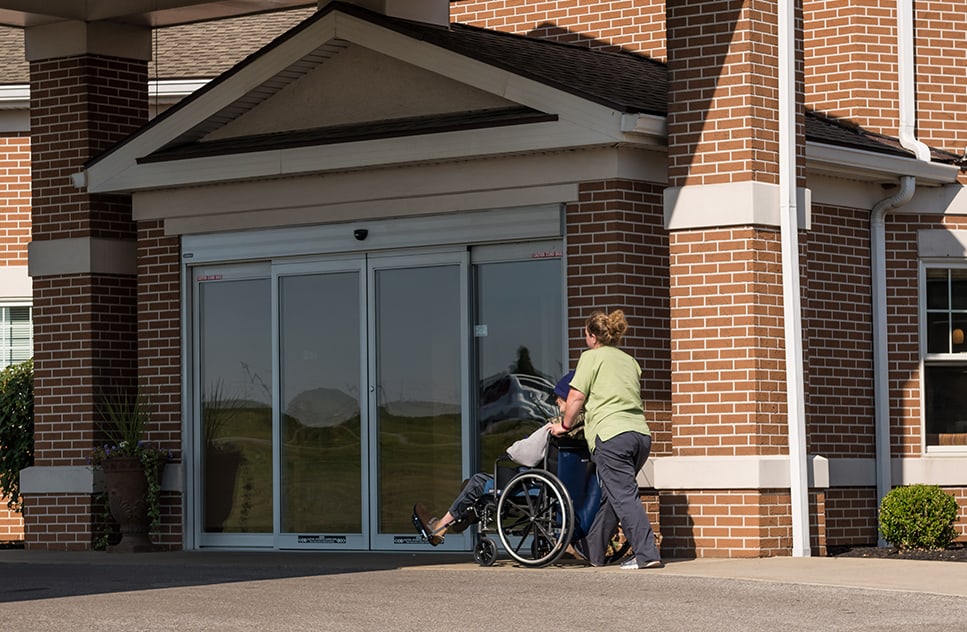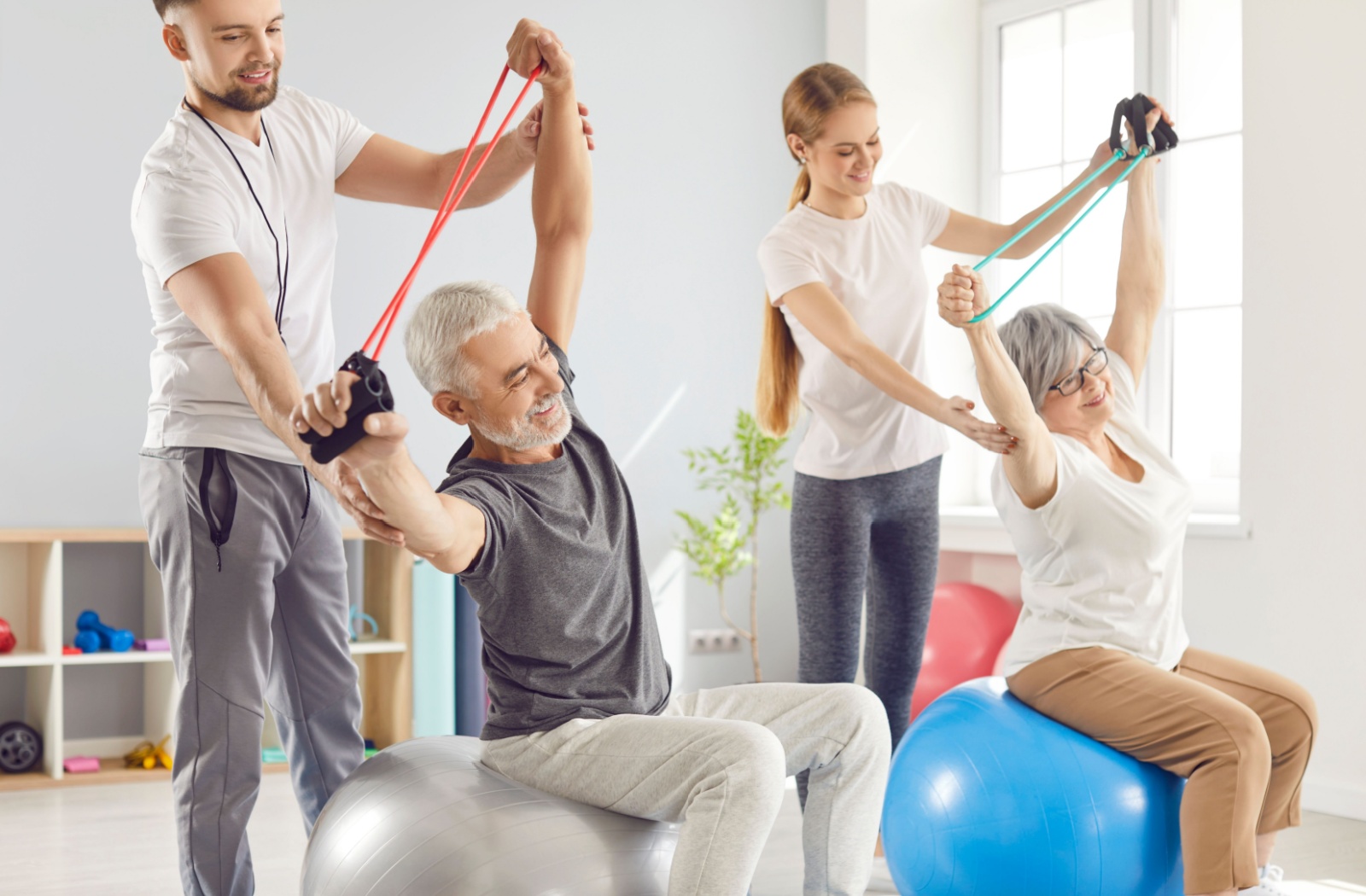Staying active is one of the most effective ways to support long-term health as you age. It can help keep your heart healthy, maintain your balance, and bring joy to your daily routine. But if you haven’t exercised in a while, it can be hard to know where to start.
The key to safe and sustainable movement is simple: choose activities that support your goals, protect your joints, and fit your lifestyle. With a few thoughtful steps, exercise can be both healthy and enjoyable. It’s all about being proactive to keep yourself safe.
Benefits of Exercise for Seniors
When approached mindfully, exercise supports nearly every part of your well-being. It doesn’t need to be intense or overwhelming to make a difference.
Regular movement can help:
- Improve heart & brain health
- Boost everyday mood & energy
- Increase joint flexibility & mobility
- Support healthy weight & digestion
- Strengthen bones & muscles
- Enhance balance & reduce fall risk
Gentle, low-impact exercise also supports memory, focus, and social connection. Whether you’re going for walks or joining a class, physical activity can make each day a little brighter.
Why Safety Matters When Exercising
Movement is important, but so is protecting your body while doing it. Unsafe exercise can lead to preventable injuries or setbacks. Without proper care, a poor exercise routine can lead to numerous long-lasting problems.
Improper exercise increases the risk of:
- Falls or balance loss during movement
- Joint strain or repetitive use injuries
- Overexertion that leads to fatigue or pain
- Exercising with an untreated health condition
That’s why safety should always come first. By matching your routine to your current fitness level and health status, you can avoid discomfort and stay motivated.
Tips for Safe Exercise as a Senior
Safe movement doesn’t have to be complicated. With a few simple strategies, you can make safe workouts part of your routine at any age.
Start with a Health Check-Up
Before you begin a new exercise plan, it’s a good idea to check in with your doctor. They can help you understand any limitations you may have and offer suggestions tailored to your current mobility or medical conditions.
Consulting a professional who knows you is especially helpful if you have diabetes, arthritis, or other chronic conditions that may impact your stamina. Knowing your personal boundaries helps you move with confidence.
Choose Low-Impact Activities
Low-impact exercise is ideal for older adults. Activities like walking, swimming, stretching, and tai chi are easier on your joints than high-impact options like running or jumping.
They still offer the same vital benefits—like improved circulation, muscle tone, and balance support—but in a gentler, more sustainable way.
Warm Up & Cool Down Properly
Warming up prepares your body for movement and helps prevent stiffness. Try gentle stretches, shoulder rolls, or marching in place before beginning your routine.
When you’re done, cool down with slow walking or stretching to help your heart rate return to normal. This small step can reduce soreness and promote recovery.
Use Proper Equipment & Footwear
Good shoes can go a long way. Look for footwear that supports your arches, fits well, and has non-slip soles. If you’re using tools like resistance bands, weights, or exercise chairs, check that your equipment is in good condition and appropriate for your ability level.
Stay Hydrated & Avoid Overexertion
Even short workouts can be dehydrating, especially in warm weather or indoors. Keep water nearby and sip throughout your session.
Pace yourself. If something doesn’t feel right, pause or stop—there’s no harm in taking breaks. Fitness is about consistency, not pushing your limits. It’s okay to challenge yourself, but listen to your body when it needs to pause.
Exercise with a Partner or Group
Working out with others adds a layer of safety, and it can make your routine more enjoyable. An exercise partner can help keep you motivated and accountable. Whether it’s a friend, caregiver, or class group, shared movement keeps things fun.

Creating a Safe & Enjoyable Routine
Our bodies change over time, and so should our routines. If you notice pain, stiffness, or fatigue during your usual exercises, it may be time to make a few small adjustments.
It helps to:
- Choose a time of day when you feel energized
- Keep workouts short at first, then build up slowly
- Schedule movement into your daily routine
- Add variety with different activities or music
- Track your progress with a journal or checklist
- Reward yourself with something positive after finishing
Being flexible with your routine helps you stay engaged and avoid frustration. Exercise should feel good—not like a chore.
Stay Active & Safe as You Age
Regular movement has the power to improve your energy, balance, and mood at every stage of life. By putting safety first and listening to your body, you can enjoy all the benefits of staying active without the strain.
Here at Kingston of Ashland, we always support community members in their journey towards a healthier, more active life. Staying safe and active is key to independence, and we’re ready to support you every day. Schedule a tour with us today to learn more!






